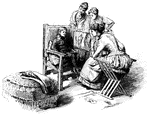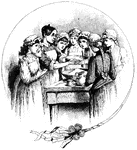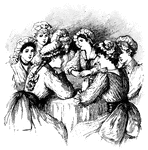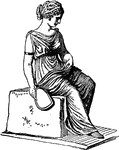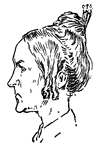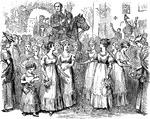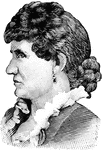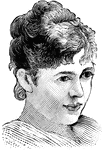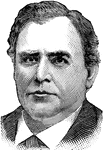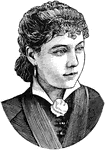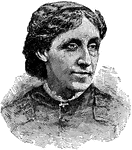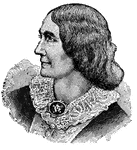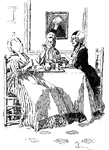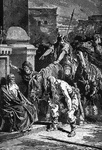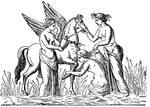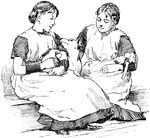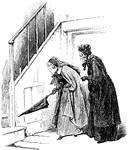
Crotalum
"A kind of cymbal. It appears to have been a split reed or cane, which clattered when shaken with the…
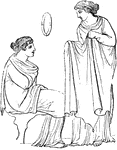
Peplus
"The peplus was a shawl which commonly formed part of the dress of females. It was often fastened…
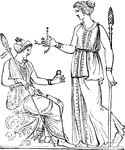
Women with necklaces
"It is a very common error to translate monile baccatum, "a pearl necklace". The ornament of…
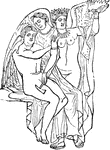
Women with necklaces
"It is a very common error to translate monile baccatum, "a pearl necklace". The ornament of…

Lectica
"Lectica was a kind of couch or litter, in which persons, in a lying position, were carried from one…
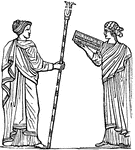
Mitra
"An eastern head-dress, sometimes spoken of as a characteristic of the Phrygians. It was also the name…

Pistor
"A baker, from pinsere, to pound, since corn was pounded in mortars before the invention of mills. At…
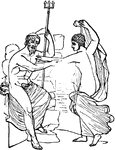
Reticulum
"A caul or coif of network for covering the hair, worn by women during the day as well as the night.…
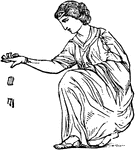
Talus
"Talus. The huckle-bones of sheep and goats were used to play with from the earliest times, principally…

Anna E. Dickinson
Orator and lecturer. Anna Dickinson is also known for being an abolitionist for women's rights.

Mrs. Parnell
Mother of Charles Stewart Parnell and is called an "American lady." She is the daughter of Commodore…
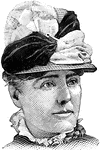
Kate Field
Miss Kate Fields was outspoken against Mormons and an author of Pen Portraits of dickens' Readings…
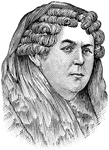
Elizabeth Cady Stanton
Mrs. Stanton was an early women's rights activist and abolitionist of slavery.
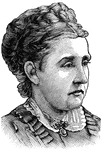
Julia Ward Howe
Julia was an abolitionist and poet. She is famous for the Battle Hymn of the Republic and for…

Frances Elizabeth Willard
Frances Elizabeth Caroline Willard was an educator and women's suffragist. She was president of the…

Dr. Mary Edwards Walker
Dr. Walker (1832-1919) was a feminist, abolitionist, prohibitionist, spy, prisoner of war, surgeon and…
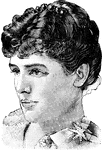
Jennie Churchill
Jennie Churchill, Mrs. Churchill was formerly Jennie Jerome. Lady Randolph Churchill was the mother…

Elizabeth Rodgers
Mrs. Rodgers was a delegate at the Knights of Labor convention at Richmond in 1887. She organized the…
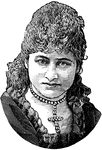
Mary Anderson
American actress who published two autobiographies, A Few Memories and A Few More Memories.

Frances Cleveland
Frances Clara Folsom Cleveland Preston was the First Lady of the United States, President Grover Cleveland's…

Emily Faithfull
Printer and publisher of her magazine, "Victoria Magazine," she employed only women and advocated women…
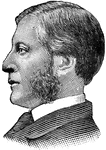
Charles W. Eliot
Educator who became president of Harvard and presided over a period of great growth which included the…
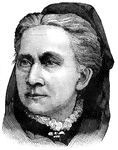
Belva Ann Lockwood
Lawyer and feminist and was the first female lawyer to argue before the Supreme Court. She was the presidential…
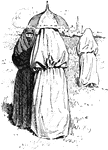
Turkish women
"These are two Turkish women, who have their heads and faces wrapped up." —Carpenter, 1902
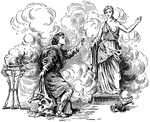
Pygmalion
"The story of Pygmalion and his statue is in all probability an allegory. Pygmalion was a virtuous and…
Consumers' League Label
"The Consumer's League is trying to raise standards in relation to the sanitation of workrooms and shops…

